Content
9.4 DESCENDING WITH A BAG
MOVEMENT IN WATER
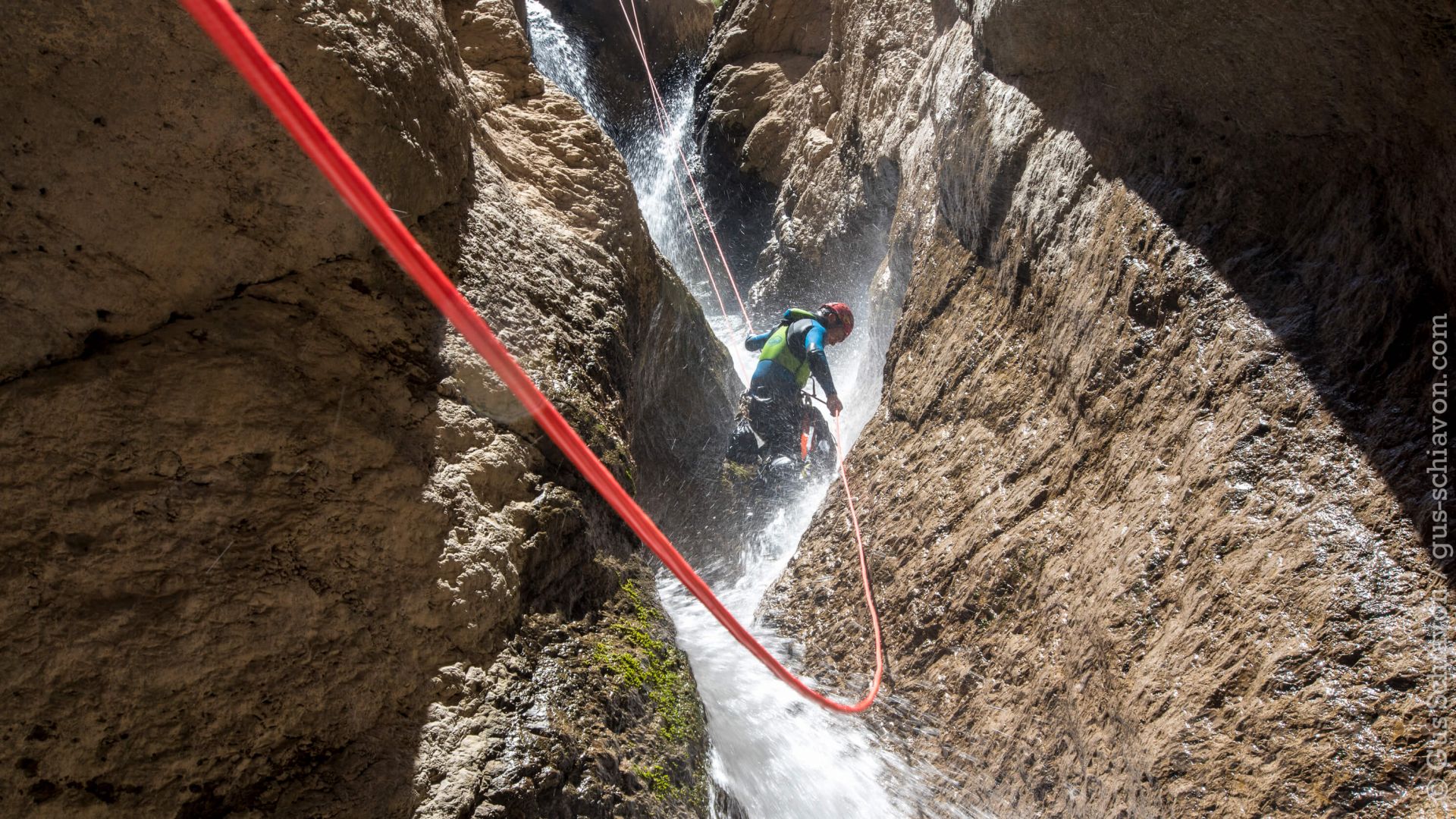
OVERVIEW
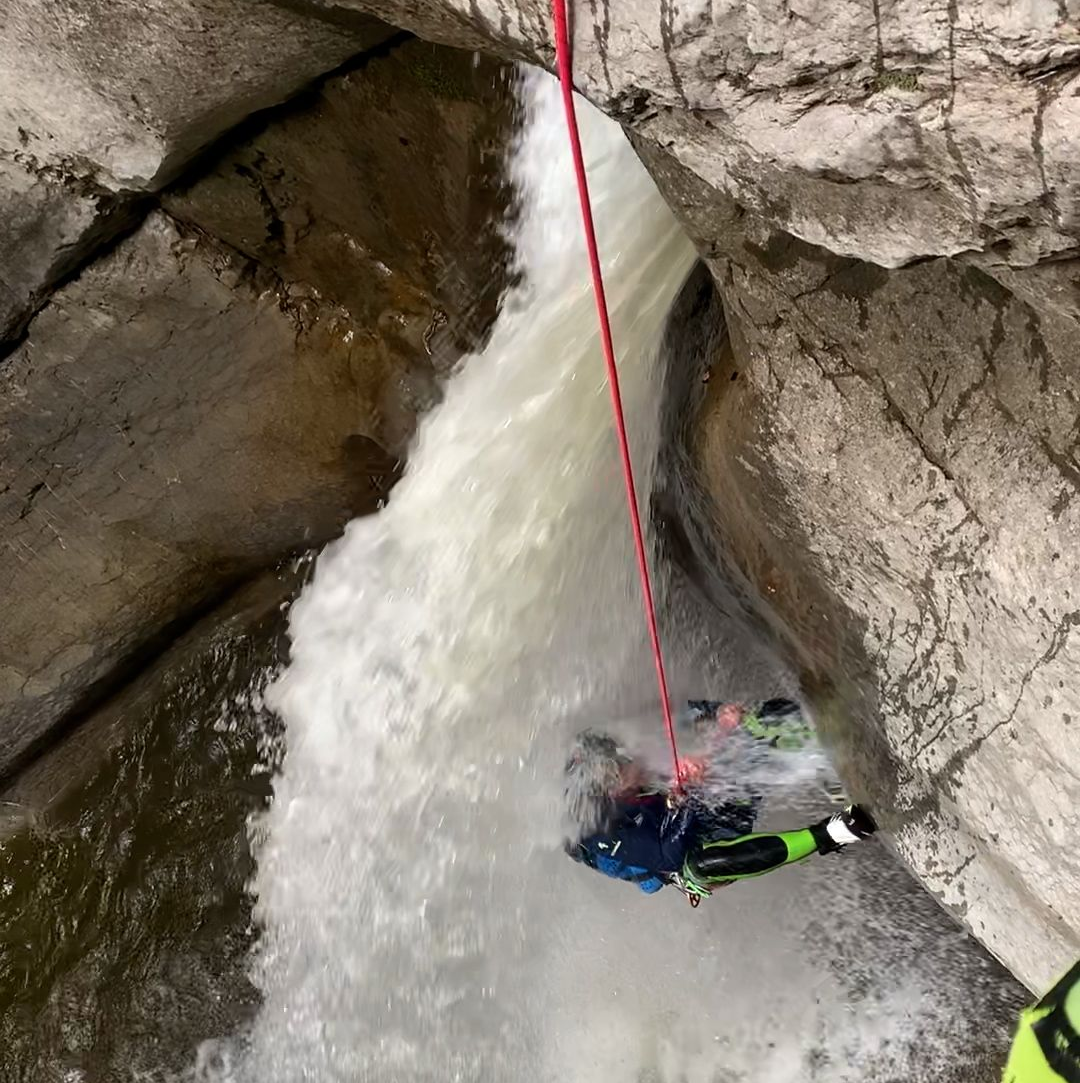
Rappelling with a bag on the back in the flow and at an overhang is the most dangerous situation!
As we have previously learned, carrying a bag while canyoning is often a necessity, but it can also be a hindrance.
Canyoning bags can be large and bulky, it’s important to know that carrying a bag on your back whilst rappelling under a waterfall can be dangerous.
There is a risk the bag could be subject to force from the waterfall or even fill up, causing us to get pulled back and possibly invert (going upside down).
WATCH THE VIDEO LESSON
You can also review the content in the eBook below.
eBook: Descending with a bag
Strong waterflow whilst rappelling under a waterfall with a bag on our backs can throw us off balance, or even invert us. This is a situation we should try to avoid.
Let’s look at some options we have for managing a bag during a waterfall rappel.
MANAGING A BAG IN A WATERFALL
When there is water present or a significant flow, we have 3 options of bag management, depending on the situation. These are:
Throw the bag
Zipline the bagAttach the bag to our harness
Let’s explore these techniques a little more:
Throwing the bag
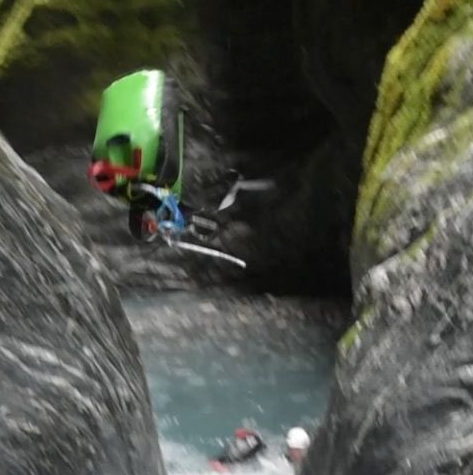
Modern canyon bags can take the beating. Throw them!
The best way to manage our bag during a descent under a waterfall is to not carry it at all. It can be much safer and easier to throw it. Modern canyoning bags are robust and durable and can take a lot without getting damaged.
Throwing the bag is ok, BUT before we throw our bags down a waterfall, we should consider a few things:
-
Does the bag float?
-
Is there something fragile inside?
-
Will the bag land in water? (not onto rocks?)
-
Is there a team member at the bottom to collect it?
-
Are there big water movements at the bottom?
-
And finally: can we safely throw it from our position?
If so, we need to make sure to communicate with our team members first, and then we can safely throw the bag.
Important: Throwing the bag requires awareness of the results of this action. Throwing a bag into the wrong place can result in it flowing out of reach, or worse: into a water movement from which it will be difficult to recover. It is best to consider the flow pattern of the water and where it will bring the bag before throwing it down.
Ziplining the bag
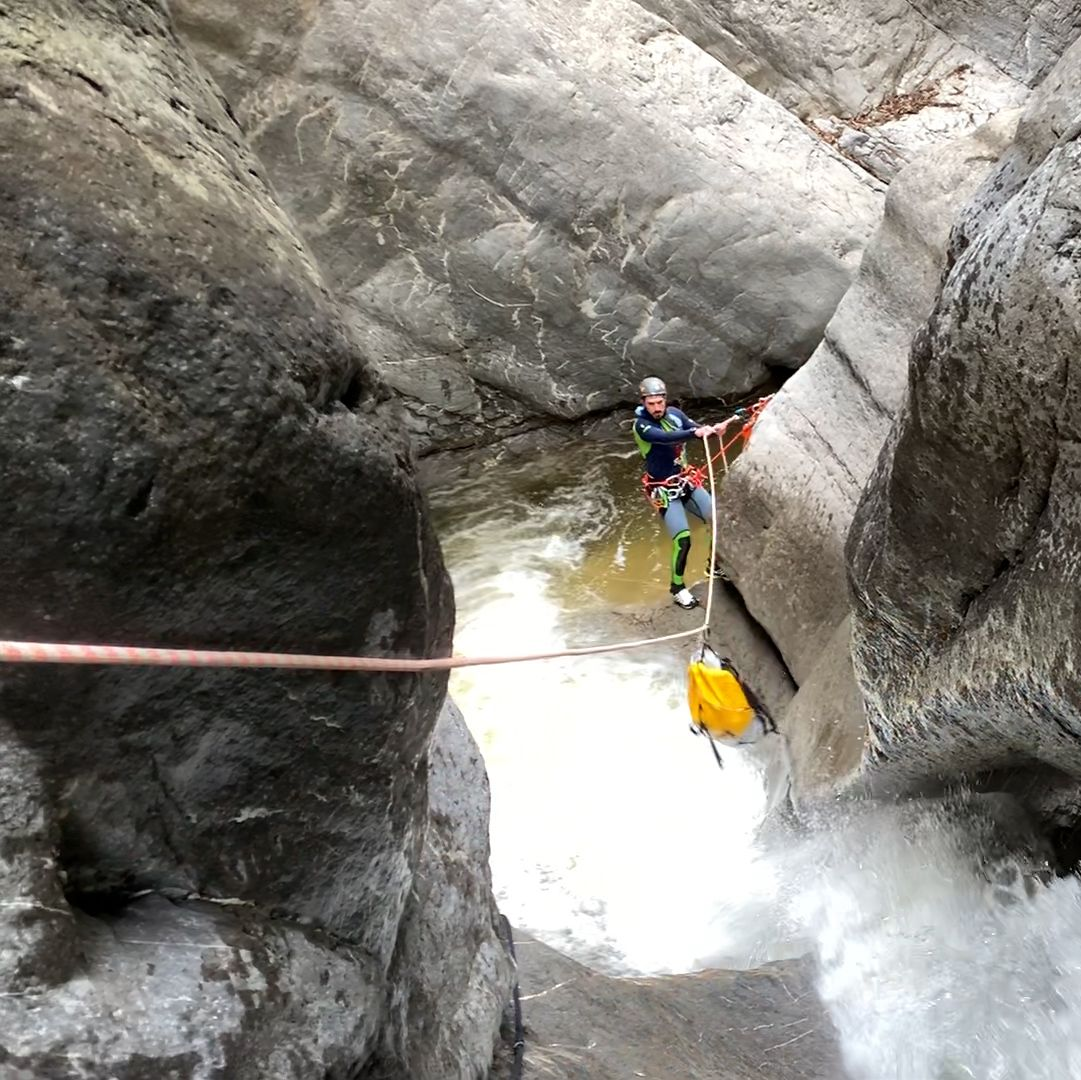
A bag being ziplined to a teammate
If it’s difficult to throw our bag down safely, it may be possible to zipline it down the rappel line to a teammate.
The teammate needs to first pull the rappel rope tight to create the zipline. Then attach the bag to the zipline with a single carabiner. As the bag approaches the teammate at the bottom, they should allow slack in the rope so that the bag stops short of slamming into the teammate’s hand.
Attach to harness
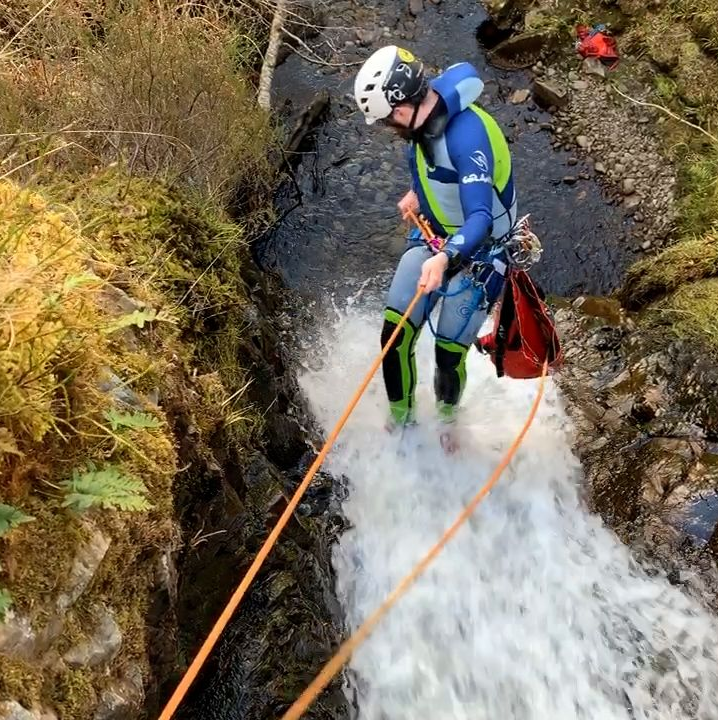
A canyoneer rappels with a bag on his side
This technique involves clipping the bag to our harness.
We suggest using the attachment points at the top of the bag along with a key-locking, snap gate or unlocked screw-lock carabiner.
We should avoid clipping the bag to our harness using the bag lanyard, as a dangling bag can wrap around the rappel rope and stop a descent. Instead, we clip the bag’s handle directly to our harness.
We use a snap gate or unlocked screw-lock carabiner to facilitate a quick release. We may have to release the bag during the descent for safety reasons, or in the pool at the bottom of the waterfall.
We need to make sure to attach the bag to a strong point on our harness. Many modern canyoneering harnesses have these attachment points.
V7 TIP: ATTACHING A BAG TO OUR HARNESS

We clip the bag on the opposite side of our dominant rappel hand: this prevents the rope from getting entangled on the bag’s lanyard.
We avoid attaching the bag to the gear loop on our harness. They are often only rated between 5-7kgs and the weight of our bag plus water could easily exceed this. If our gear loop breaks, we will not only drop the bag, but all our gear too…
Picture: Rappelling with a bag attached to the harness
SUMMARY
If we are not descending in the water, we can safely carry our bag on our back. Be aware, if the bag is heavy it could still pull us backward. In water flow, the best option is to throw our bag, but we need to make sure to communicate this to our team. If we have to carry it, we attach it to the side of our harness with a snap gate or open screw-lock carabiner to a strong attachment point. We try not to let the bag hang too low as it can easily twist around our descent rope.
oint. We try not to let the bag hang too low as it can easily twist around our descent rope.























 927
927

 被折叠的 条评论
为什么被折叠?
被折叠的 条评论
为什么被折叠?








